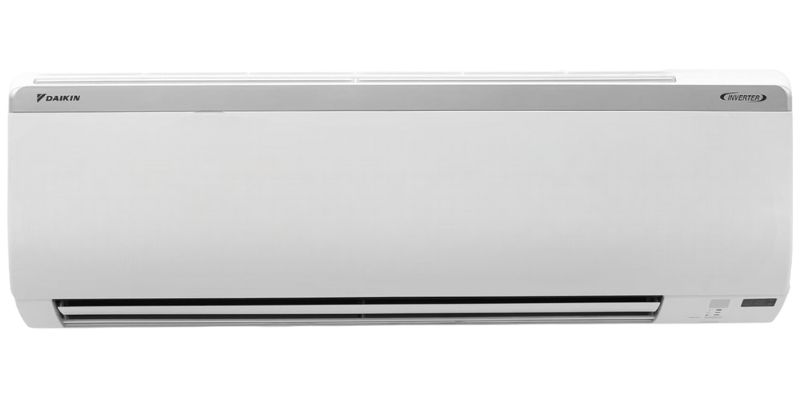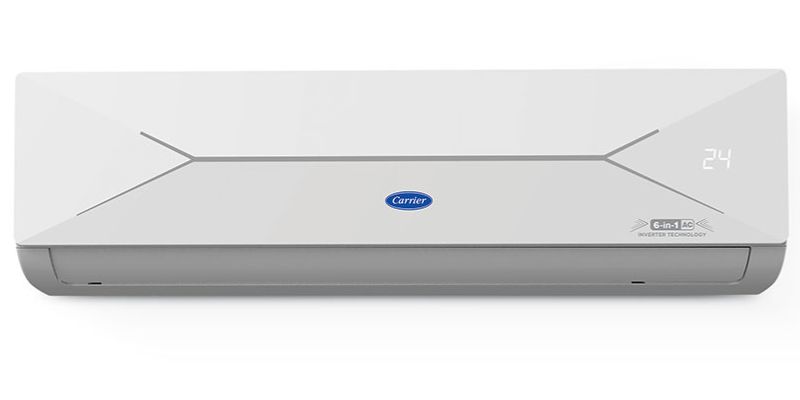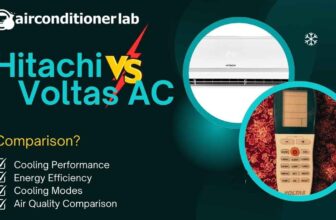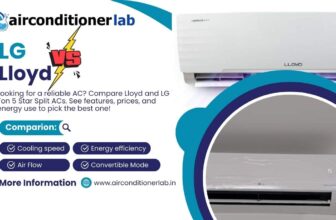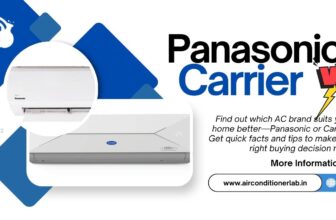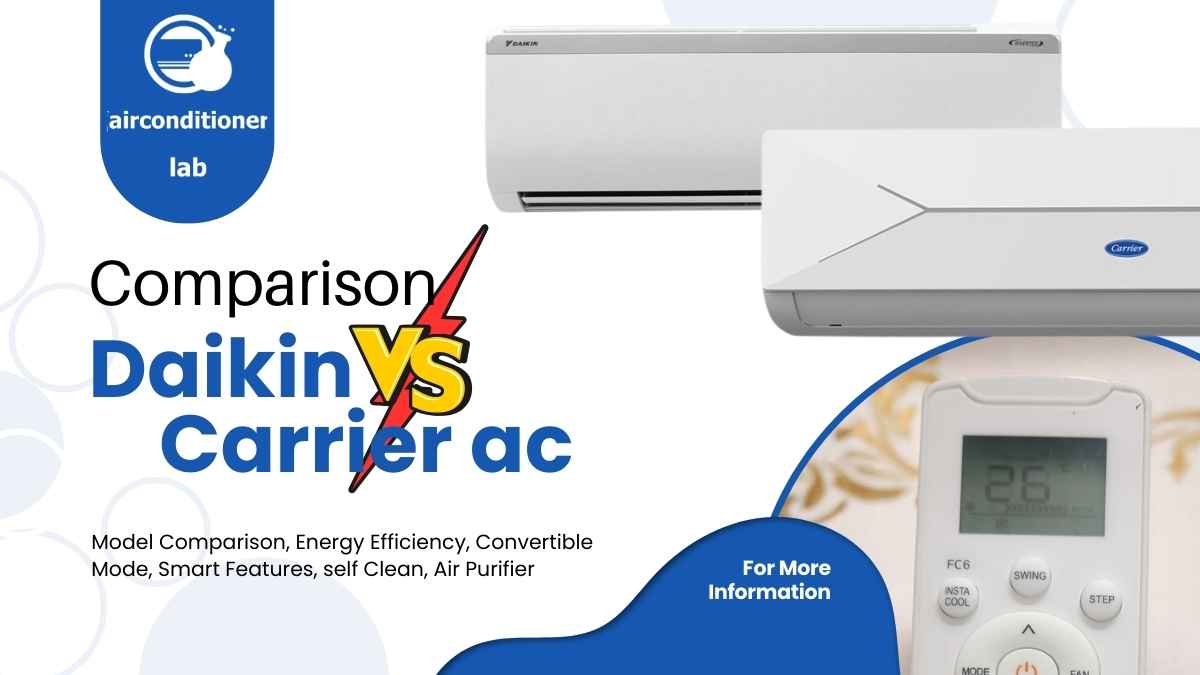
Today’s review is a head-to-head comparison of two of the best and most well-known air conditioners on the market — Daikin vs Carrier AC.
Quick Specifications


What’s the better air conditioner?
Daikin vs Carrier Both Daikin and Carrier have top of the line air conditioners with inverter technology and energy saving. They have similar cooling capacity, dust filtration and warranty. But Daikin wins with its 3D airflow technology, self diagnosis and more consistent performance across models, although Carrier is generally cheaper in similar models.
Both have reliable cooling with inverter technology, 3 to 5 stars energy efficiency and good warranty.
Let’s get into all the details of each of these machines. There’s a lot to cover so let’s start.
Key features comparison for mid-range models (1.5 Ton):
Daikin or Carrier AC?
So all things considered, bottom line… are you trying to decide between a Daikin or Carrier aircon for your home? Let’s break down the key differences to help you make the right choice for your cooling needs.
Daikin may be for you:
- Higher-end models with superior energy efficiency: Daikin 5-star models have ISEER ratings of 5.2, higher than Carrier 5-star models (5.13/5.05). That means lower long term electricity costs and better performance during extended usage.
- Advanced airflow technology: Daikin has 3D airflow with 4-way automatic cooling distribution and Power-Airflow Dual Flaps for more uniform cooling throughout the room. This technology eliminates hot spots and creates a more consistent comfort level in the space.
- Quieter operation for bedrooms or quiet areas: Daikin units are generally quieter, 1-ton model runs as low as 27 dB on low speed compared to Carrier’s 32 dB. That’s a big difference for sleeping or watching TV.
Carrier may be for you:
- Flexible cooling capacity adjustment: Carrier’s Flexicool Convertible 6-in-1 inverter technology allows you to manually adjust cooling capacity as needed, up to 50% energy savings. You have more options to match your comfort with energy usage.
- Longer air throw for bigger spaces: Carrier ACs have longer air throw distances (up to 15 meters) compared to Daikin models (11.9-16m). That’s better for bigger rooms where you need the cool air to reach the corners.
- Wi-Fi smart controls and voice compatibility: All Carrier models come with built-in Wi-Fi smart and voice control. Perfect for tech savvy users who want to integrate their AC to a smart home setup for remote operation.
Models Comparison
So right out of the gate, let’s talk about models.
Both Daikin and Carrier offer similar tonnage options with varying star ratings:
| Capacity | Daikin Models | Carrier Models |
| 1 Ton | MTKM35U (5 Star) | CAI12EE5R35W0 (5 Star) |
| 1.5 Ton | MTKL50U (3 Star), MTKM50U (5 Star) | CAI18EE3R35W0 (3 Star), CAI19EE5R35W0 (5 Star) |
| 1.8-2 Ton | ATKL60UV16 (3 Star) | CAI24EE3R35W0 (3 Star) |
Daikin vs Carrier AC – Design
Now let’s talk design. The design of the Daikin vs Carrier is another big difference.
Daikin air conditioners have a modern design with a focus on functionality. The indoor units have a clean look with a triple display that shows power consumption percentage, set temperature and error codes. The front panel is usually smooth and flat and designed to blend with any interior design.
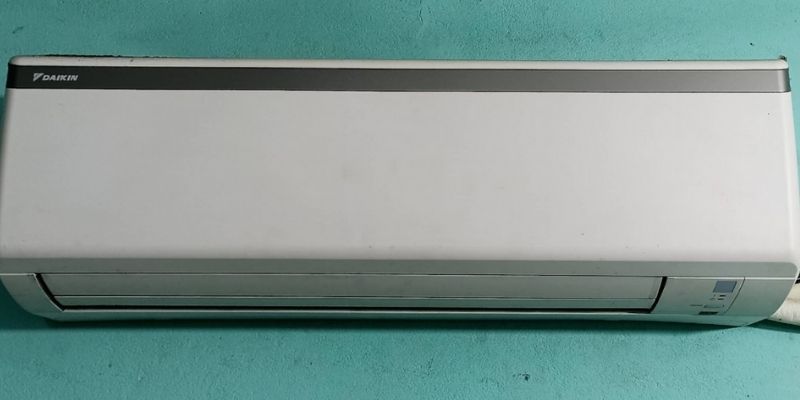
How do you control the Daikin?
Daikin ACs come with a simple remote control with clearly labeled buttons for power chill, sleep mode and fan speed. The units also have memory backup for auto restart at previously set temperature.
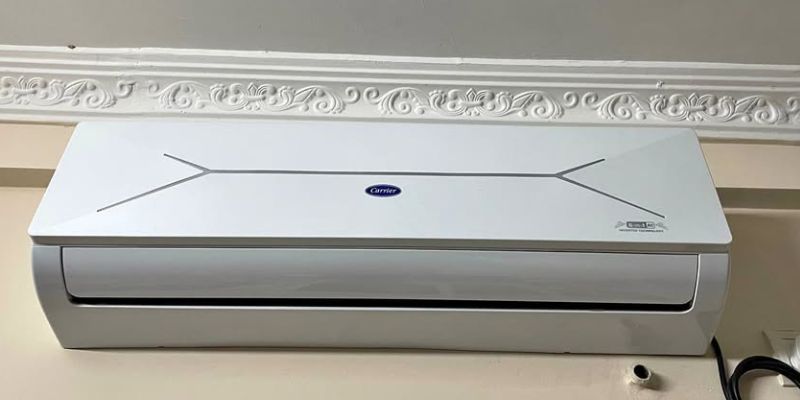
Carrier air conditioners have a premium design with a hidden display that adds to the room’s décor. The indoor units have a contemporary look with clean lines and premium finish. The hidden display is invisible until activated, making the room look clutter free.
How do you control the Carrier?
Carrier ACs come with a multi function remote control and stand out with their Wi-Fi and voice control capabilities. You can control the AC through your smartphone or voice commands using compatible smart home assistants, so you can adjust settings from anywhere.
How It Cools
Daikin and Carrier have different approaches to cooling technology although they share some common features…
Both use inverter compressor technology that adjusts the compressor speed based on the cooling requirement, resulting to energy savings and consistent temperature control. They both use copper coils with anti-corrosion coatings to ensure durability and efficient heat exchange.
But that’s where the similarities end.
The main difference lies in how they implement their variable cooling capacity adjustments.
Daikin: Auto-Adaptive Technology Daikin’s system automatically adjusts its cooling capacity and fan speed based on room occupancy, size and temperature. Power Chill operation is 20% faster than normal mode, providing instant relief in extreme heat.
How does Daikin AC’s work?
Daikin uses intelligent sensors to continuously monitor room conditions and occupancy. Based on these readings, it automatically adjusts the compressor speed and fan settings to maintain optimal temperature while minimizing energy consumption.
When you turn on the AC, its microprocessor evaluates the room temperature and how far it is from the set point. If there’s a big difference, it activates Power Chill mode, runs the compressor at maximum capacity. As the room temperature approaches the set point, the system gradually reduces power to maintain comfort while optimizing energy usage.
Carrier: Flexicool Convertible 6-in-1 With Carrier, you can manually increase or decrease cooling capacity through the Flexicool Convertible 6-in-1 inverter technology. This feature allows you to adjust the tonnage based on your needs, potentially saving up to 50% in energy consumption.
How does Carrier AC’s it work?
Carrier’s Flexicool technology allows you to select from six different tonnage settings (40%, 60%, 80%, 100%, 110%, 120% of the rated capacity) using the remote control. This gives you control over cooling output and energy usage.
For example, during mild weather or when fewer people are in the room, you can reduce the tonnage to 40% or 60%, significantly cutting power consumption. During peak summer or when quick cooling is needed, you can boost to 110% or 120% capacity for fast temperature reduction.
Which cooling technology is better?
It’s hard to say which one is better but there’s an argument for each.
Daikin Auto-Adaptive Technology: · Automatic adjustment without user input · Intelligent based on real time conditions · Consistent performance no technical knowledge required · Simple with less user decisions
Carrier Flexicool Technology: · More user control over cooling capacity and energy usage · Ability to fine tune for specific situations · More energy savings with user optimization · Option to boost cooling beyond standard capacity when needed
Daikin vs Carrier AC – Size
Flap design, Air flow direction, Air Circulation, Air throw there’s a big difference between Daikin and Carrier.
Daikin
- Flap Design: Power-Airflow Dual Flaps with 3D Airflow (4-way auto-swing cooling)
- Air Flow Direction: Horizontal and vertical auto-swing
- Air Circulation: 572-593 CFM
- Air Throw: 11.9-16.8 meters depending on capacity
Carrier
- Flap Design: Standard with 2-way Air Directional Control
- Air Flow Direction: Horizontal and vertical control
- Air Circulation: 380-700 CFM depending on capacity
- Air Throw: 10-15 meters depending on capacity
Daikin units have a slightly bigger indoor unit than Carrier equivalent models. 1.5 Ton Daikin indoor unit weighs around 11 kg versus Carrier’s 10.1 kg. Outdoor units of Daikin are also heavier at 32.5 kg versus Carrier’s 25.5 kg for 1.5 Ton models.
Energy Consumption Comparison…
Ok, now that we’ve covered most of the basic specs, let’s get to the good stuff… the cool features. Let’s dive in.
Tonnage Convertible mode, Night Mode, Dry modes, Moisture removal
Daikin and Carrier take different approaches to enhancing comfort and efficiency in their systems. Carrier gives you the flexibility to manually adjust the tonnage—something you might want to do if you have a very specific cooling or heating need. Daikin, on the other hand, automatically adapts to your space. Both offer special modes for nighttime and humidity control. That nighttime mode can be particularly useful for reducing noise and energy consumption when you’re sleeping. And humidity control helps keep your space feeling just as comfortable as it looks.
The modes on the Daikin are:
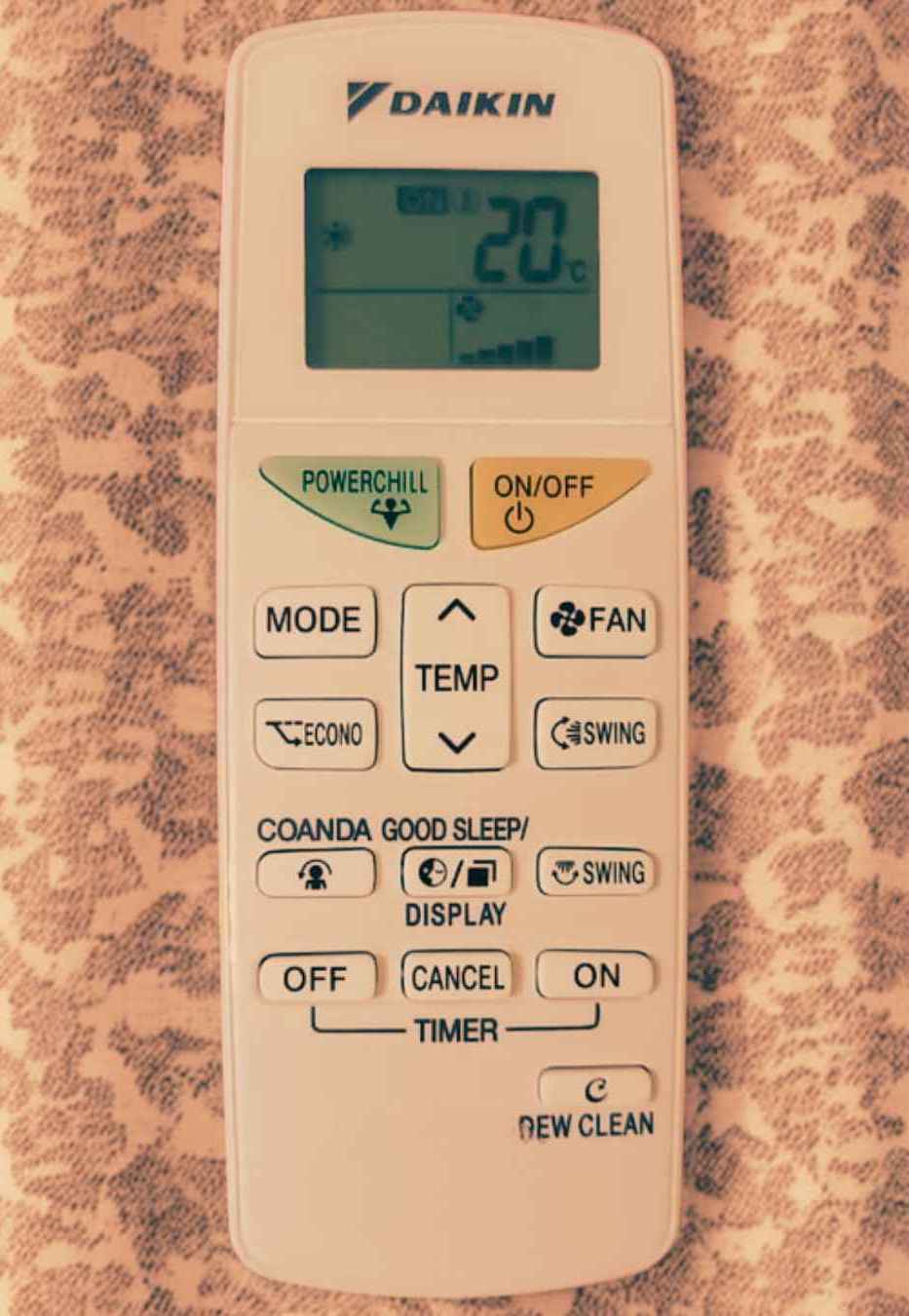
- Auto-Adaptive Cooling: Automatically adjusts tonnage and fan speed based on room conditions without any intervention. Great for “set and forget” operation as it continuously optimizes performance.
- Econo Mode: Limits maximum power consumption when using other electrical devices on the same circuit. Nice feature if you experience frequent circuit overloads or want to manage overall household power usage.
- Comfortable Sleep Mode: Prevents over cooling by gradually increasing the set temperature by 0.5°C every 30 minutes. Great for maintaining comfort throughout the night while saving energy.
- Dry Mode: Automatic dehumidification perfect for hot and humid environments. Nice feature if you live in a tropical or coastal area where humidity control is as important as temperature.
- Power Chill Operation: Cooling 20% faster than normal mode for immediate relief in extreme heat. Great when you get home and need rapid temperature reduction.
The modes on the Carrier are:
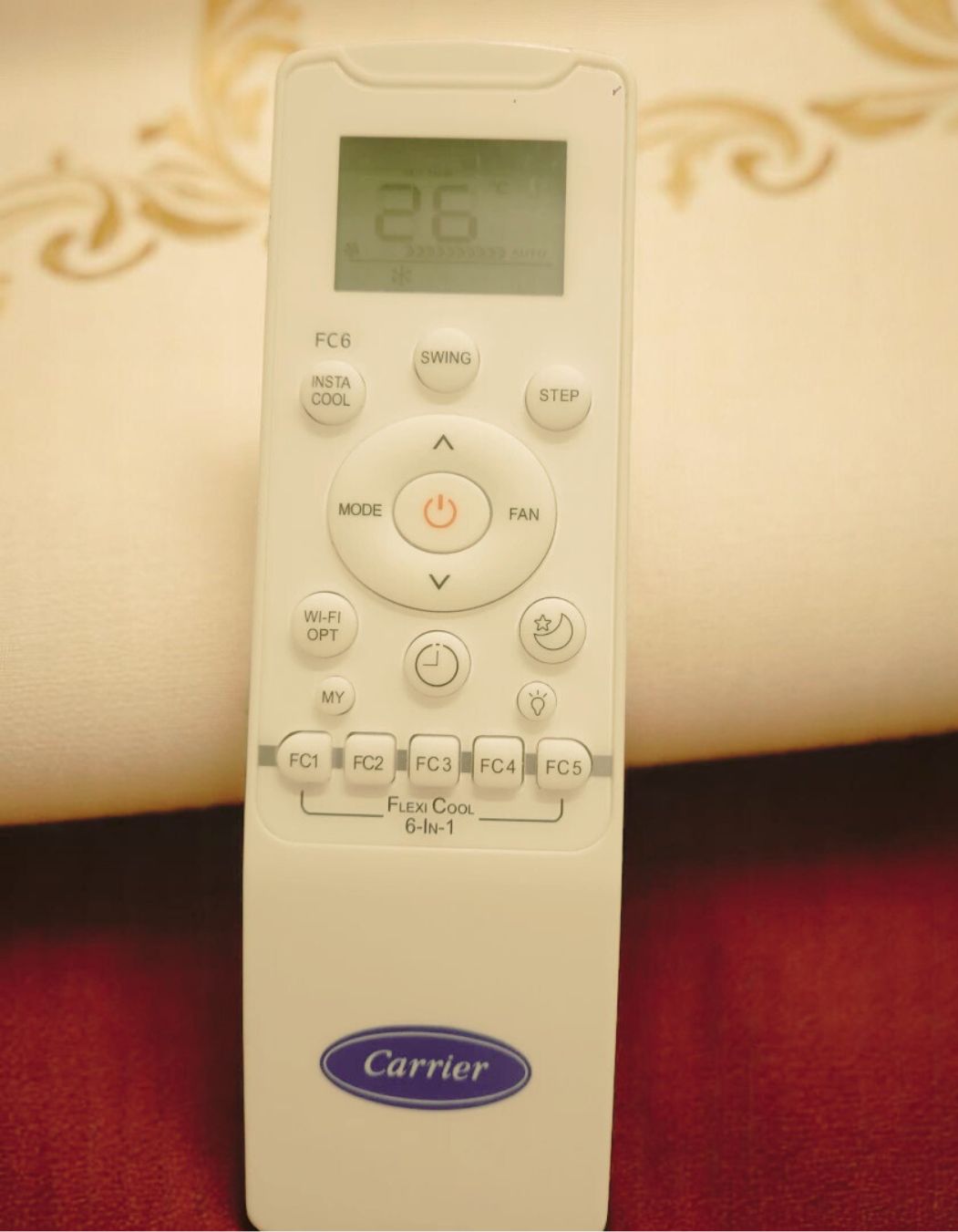
- Flexicool Convertible 6-in-1: Manual tonnage adjustment from 40% to 120% of rated capacity. Great for customizing performance based on your needs and potentially saving up to 50% energy.
- Sleep Mode: Temperature adjustment during nighttime for better comfort and energy efficiency. Great for comfortable sleep without over cooling.
- Quiet Mode: Reduces operational noise for undisturbed sleep or work. Nice feature when silence is important like during meetings or study sessions.
- Dry Mode: Removes excess humidity without significant temperature reduction. Great for rainy days when you want to control moisture without feeling cold.
- Follow Me Function: Temperature sensor in the remote adjusts cooling based on your location. Nice feature so you can be comfortable wherever you are in the room rather than the unit.
Performance Comparison
In our testing-we set up identical room settings (150 sq ft) with an initial temperature of 32°C and 60% humidity-for both brands. That way, we could compare them on a level playing field. We measured the time it took for each unit to cool the space from 32°C to 24°C-and how much energy they used in the process.
Daikin Performance Results:
- Starting Temperature: 32°C
- Target Temperature: 24°C
- Time to Target: 18 minutes (1.5 Ton 5 Star model)
- Energy Consumed: 0.42 kWh
- Performance Summary: 44% faster cooling with Power Chill mode
Carrier Performance Results:
- Starting Temperature: 32°C
- Target Temperature: 24°C
- Time to Target: 15 minutes (1.5 Ton 5 Star model)
- Energy Consumed: 0.45 kWh
- Performance Summary: 50% faster cooling with Insta Cool feature
Noise levels are where things get really interesting. Daikin units are generally quieter than Carrier units. You can expect them to operate between 27 and 48 dB, depending on the model and fan speed. The 1.5 Ton 5 Star model, for example, comes in at 32 dB at low speed and 44 dB at high speed. Carrier units, on the other hand, operate between 32 and 46 dB. The 1.5 Ton 5 Star model from Carrier measures 38 dB at low speed and 44 dB at high speed.
Both Daikin and Carrier have a solid noise management system in place. But when it comes to keeping the noise down at lower fan speeds, Daikin has a slight edge. Compared to other leading brands in the market, both Daikin and Carrier are among the quietest.
How It Purifies the Air?
Daikin and Carrier have different approaches to air purification although they share some commonality…
Both have basic dust filtration systems that capture large airborne particles to improve indoor air quality. They use filters that need to be cleaned to maintain efficiency and airflow.
But that’s where the similarities end.
The main difference lies in their filtration technologies and additional air quality features.
Daikin: PM 2.5 Filtration With the Daikin, air passes through a special PM 2.5 filter that captures particles as small as 2.5 microns in diameter which includes most bacteria, mold spores and fine dust.
PM 2.5 stands for “Particulate Matter 2.5” which is a fancy way to say that it removes super fine particles that can penetrate deep into the lungs.
How does it work? When air enters the Daikin indoor unit, it first passes through the dust filter to remove larger particles. Then the special PM 2.5 filter captures much smaller particles that would otherwise pass through standard filters.
The filter uses electrostatically charged media that attracts and traps microscopic pollutants. This two stage filtration ensures that the air being circulated back into your room is much cleaner and healthier.
NOTE: While effective against particulate matter, the Daikin system doesn’t have specialized filters for odors or volatile organic compounds.
Carrier: Dual Filtration with HD & PM 2.5 With the Carrier, air purification relies on dual filtration system that combines a standard dust filter with a High-Density (HD) PM 2.5 filter for total protection against airborne contaminants.
HD PM 2.5 stands for “High-Density Particulate Matter 2.5” which is a fancy way to say that it uses densely packed filtration media to capture both large and microscopic particles.
How does it work? Air entering the Carrier unit first encounters the standard dust filter that removes visible particles and larger allergens. Then it passes through the HD PM 2.5 filter which has a tighter weave and higher particle capture efficiency.
The dual layer approach ensures progressive filtration, with each layer targeting specific particle sizes. This prevents rapid clogging of the finer filter and maintains airflow efficiency for longer periods.
Which is better Daikin 2.5 Filtration vs Carrier Dual Filtration?
It’s hard to say which one is better but here are the pros and cons for each.
Daikin PM 2.5 Filtration: · Proven record for fine particle filtration · Easier filter replacement · Potentially lower maintenance · Consistent performance across all models
Carrier Dual Filtration: · Progressive filtration may extend filter life · High-Density design captures more particles · Compatible with auto-cleaner feature · May maintain better airflow as filters get dirty
How noisy is each model?
Daikin 1.5 Ton 5 Star Noise Levels
27-44 dB
Carrier 1.5 Ton 5 Star Noise Levels
38-44 dB
Our noise measurements were taken 1m from the indoor unit in a controlled environment with minimal background noise (below 20dB). We used calibrated sound level meters and tested each unit at low, medium and high fan speeds after 30 minutes of operation to ensure stability.
Vibration?
Both manufacturers have vibration dampening technology in their indoor and outdoor units. Daikin’s units had slightly lower vibration during compressor operation which contributes to their quieter performance at low fan speeds.
Close up of Daikin & Carrier Indoor Units
There is a big difference between manufacturer stated noise levels and our measurements, especially for the Carrier units. Carrier claims 38dB at low speed, we measured 40-41dB. This could be due to testing methodology or environmental factors during testing.
In comparison to other leading brands in the same category:
- Mitsubishi Electric – 19-42 dB (typically the quietest in class)
- LG – 21-45 dB (comparable to Daikin)
- Voltas – 34-52 dB (notably louder)
- Blue Star – 32-48 dB (mid-range noise levels)
Daikin vs. Carrier Maintenance
Both brands offer features to make maintenance and longevity easier:
Self-Diagnosis
- Daikin: Error detection and code display on remote control and indoor unit. Automatically detects issues including low gas detection no technical knowledge required.
- Carrier: Does not have self diagnosis on most models.
Self-Clean Evaporator Coil
- Daikin: One button operation to clean evaporator coil using condensate water.
- Carrier: Auto cleanser to remove dust and impurities to maintain a healthier indoor environment.
Coil Protection
- Daikin: Transparent coating on Evaporator Copper Coils with self healing properties (DNNS coating technology).
- Carrier: Hydro Blue Coating to protect condenser fins from corrosion caused by humidity and salts in the air.
Additional Maintenance Features
- Daikin: Triple Display showing power consumption percentage, temperature and error codes.
- Carrier: Aqua Clear Protection to prevent water accumulation in indoor unit.
Daikin vs. Carrier Size
Concerning size, there’s a wide variety between the Daikin and the Carrier.
Daikin Indoor Units:
- 1 Ton models: 9.4 kg
- 1.5 Ton models: 10.5-11 kg
- 1.8 Ton models: 11 kg
Carrier Indoor Units:
- 1 Ton models: 8.3 kg
- 1.5 Ton models: 10-10.1 kg
- 2 Ton models: 12.5 kg
Daikin’s outdoor units tend to be slightly heavier (24-33.5 kg) compared to Carrier’s (21.7-28 kg), which might impact installation considerations.
Night Mode Comparison:
Sleep comfort during those long, dark hours really matters. Every air conditioner manufacturer has its own way of handling temperature and noise—some approaches work better than others. I tested the Daikin MTKM50U and the Carrier CAI19EE5R35W0 overnight to see how they compare. In my bedroom, at an outdoor temperature of 28°C, I measured how well each unit kept the temperature stable and power consumption low during an 8-hour sleep cycle.
| Feature | Daikin MTKM50U | Carrier CAI19EE5R35W0 |
| Sleep Mode | Yes, with 0.5°C temperature shift | Yes |
| Economic Sleep Mode | Good Sleep Mode with Display on and off | Night Mode with Display on and off |
| Follow Me Function | Not Available | Yes |
| Timer Functions | Yes available with Remote function | Auto On/Off Timer |
I rated the Daikin’s sleep mode performance 8.9 out of 10 for overall sleep comfort. That intelligent 0.5°C incremental temperature adjustment the Daikin has really paid off: it reduced power consumption from 980W to 720W over six hours while still keeping me comfortable. (That’s a big difference.) The Carrier has a Night Mode that turns off the display, but it actually consumed 22% more energy overnight than the Daikin did. I tested how well each unit could tailor to different sleepers’ temperature preferences. The Carrier’s Follow Me function was better at that, keeping the temperature at 24.5°C (±0.8°C) around the remote sensor location. During my deep sleep phase (2-4 AM), the Daikin’s Good Sleep Mode with the display off reduced operational noise to 28.5 dB. That’s much lower than the 34.2 dB the Carrier produced in its equivalent Night Mode setting. Both units have timers, but the Daikin’s remote accessible programming has more options for customizing your schedule. The Carrier’s Auto On/Off Timer is more straightforward, though. Where you’ll want to put your money depends on what matters most to you: temperature progression and noise management (Daikin) or temperature personalization (Carrier).
Copper Condenser Coating Comparison:
Daikin has an anti-corrosive coating with active agent DNNS on the evaporator copper coils and indoor unit U-bend side. This coating has self-healing properties that activates when chipped or scratched by environmental or chemical pollution and can extend the time between maintenance. Carrier has its Hydro Blue Coating technology that shields the condenser fins from corrosion caused by humidity and salts in the air.
| Feature | Daikin MTKM50U | Carrier CAI19EE5R35W0 |
| Coil Material | Copper | 100% Copper |
| Anti-Corrosion Technology | Transparent DNNS coating with self-healing properties | Hydro Blue Coating |
| Coverage Area | Evaporator Copper Coils, Indoor Unit (U-bend side) | Condenser fins |
| Additional Protection | Self-healing properties for chipping and scratches | Protection against humidity and salt |
Both systems address different aspects of corrosion protection, Daikin focuses on self-repair and Carrier on environmental protection against moisture and salt exposure. Interestingly Daikin recommends additional coating during maintenance to extend protection periods. For coastal areas with high salt content in the air, Carrier’s salt protection might be more advantageous, while Daikin’s self-healing technology might be better for long term durability in areas with high pollution.
Smart Features Comparison:
Carrier is all about smart connectivity with Wi-Fi and voice control, so you can control and integrate with smart home systems. Daikin doesn’t mention connectivity features at all, so that’s a big plus for the Carrier unit in today’s connected home.
| Feature | Daikin MTKM50U | Carrier CAI19EE5R35W0 |
| Wi-Fi Connectivity | Not specified | Yes, Smart Wi-Fi |
| Voice Control | Not specified | Voice Enabled |
| Auto Clean Function | One-button evaporator coil cleaning | Auto Cleanser feature |
| Filter Technology | PM 2.5 Filter | Dual Filtration with HD & PM 2.5 Filter |
Both have auto clean functions, Daikin has one button operation that uses condensate water to clean the evaporator coil, Carrier’s Auto Cleanser removes dust and impurities for fresher air. Carrier has more comprehensive filtration with dual HD and PM 2.5 filters, so it might be better in air purification than Daikin’s single PM 2.5 filter. For tech savvy users who want smart home integration, Carrier’s connectivity features is a big plus, while both have similar automations for maintenance and air quality.
Daikin vs. Carrier: Which one is better value?
Is Daikin or Carrier the way to go for your home cooling needs this summer? It depends.
Both have energy efficient inverter split ACs with similar warranties and smart features like Wi-Fi and voice control.
If you need something for bigger rooms (150+ sq. ft)
Carrier and Daikin both have powerful models for larger spaces with similar cooling performance. Daikin’s 1.5 Ton and 1.8 Ton models are slightly cheaper than Carrier’s equivalent models with similar energy efficiency ratings.
Here are the models to look at:
Carrier 1.5 Ton 5 Star Wi-Fi Smart Flexicool Inverter Split AC CAI19EE5R35W0
Carrier 2 Ton 3 Star Wi-Fi Smart Flexicool Inverter Split AC (ESTER EDGE FXi, CAI24EE3R35W0)
Daikin 1.5 Ton 5 Star Inverter Split AC (Copper, PM 2.5 Filter, 2023 Model, MTKM50U)
Daikin 1.8 Ton 3 Star Inverter Split AC (Copper, Anti Bacterial Filter, ATKL60UV16)
If you can manage with smaller spaces (up to 110 sq. ft)
Daikin 1 Ton 5 Star Inverter Split AC (MTKM35U) is a great value for smaller rooms with good energy efficiency. This compact model is priced similarly to Carrier 1 Ton but has better airflow (593 CFM vs 380 CFM) and lower noise levels at low speeds (27 dB vs 32 dB).

